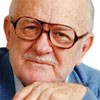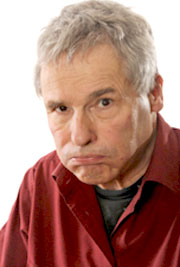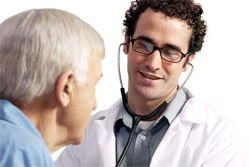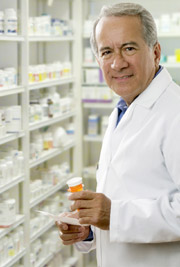- What is Testosterone Deficiency (Primary Hypogonadism and Secondary/Hypogonadotrophic Hypogonadism)
- Statistics on Testosterone Deficiency (Primary Hypogonadism and Secondary/Hypogonadotrophic Hypogonadism)
- Risk Factors for Testosterone Deficiency (Primary Hypogonadism and Secondary/Hypogonadotrophic Hypogonadism)
- Progression of Testosterone Deficiency (Primary Hypogonadism and Secondary/Hypogonadotrophic Hypogonadism)
- Symptoms of Testosterone Deficiency (Primary Hypogonadism and Secondary/Hypogonadotrophic Hypogonadism)
- Clinical Examination of Testosterone Deficiency (Primary Hypogonadism and Secondary/Hypogonadotrophic Hypogonadism)
- How is Testosterone Deficiency (Primary Hypogonadism and Secondary/Hypogonadotrophic Hypogonadism) Diagnosed?
- Prognosis of Testosterone Deficiency (Primary Hypogonadism and Secondary/Hypogonadotrophic Hypogonadism)
- How is Testosterone Deficiency (Primary Hypogonadism and Secondary/Hypogonadotrophic Hypogonadism) Treated?
- Testosterone Deficiency (Primary Hypogonadism and Secondary/Hypogonadotrophic Hypogonadism) Prevention
- Testosterone Deficiency (Primary Hypogonadism and Secondary/Hypogonadotrophic Hypogonadism) References
What is Testosterone Deficiency (Primary Hypogonadism and Secondary/Hypogonadotrophic Hypogonadism)

Testosterone in males is produced in the testicles. Testosterone deficiency arises when the testicles fail to produce enough testosterone. There are two causes of testosterone deficiency:
- Impaired testicular function: Referred to by health professionals as primary hypogonadism or testicular failure. This condition arises because the man’s testicles have some abnormality preventing them from producing testosterone; and
- Impaired pituitary or hypothalamus function: Referred to by health professionals as hypogonadotrophic or secondary hypogonadism. This condition arises because the function of the pituitary and/or hypothalamus (the two glands in the brain that regulate hormone production) is impaired.
Statistics on Testosterone Deficiency (Primary Hypogonadism and Secondary/Hypogonadotrophic Hypogonadism)
Estimates of the proportion of men who experience hypogonadism vary considerably, from 0.5% to 50%. The large differences in prevalence estimates are mainly caused by differences between the groups of men studied. For example, some studies have been conducted amongst older men, who are more likely to have hypogonadism than younger men. Therefore these studies would be likely to over-estimate the proportion of men who are testosterone deficient.
Differences also arise because of the different ways in which testosterone deficiency is diagnosed. Some studies use clinical indicators (symptoms such as lack of body hair or low sex drive) to diagnose testosterone deficiency, and these studies consider all men with clinical symptoms to be testosterone deficient. Others diagnose testosterone deficiency based on the levels of testosterone a man has in his blood. However, many men with abnormally low levels of testosterone in their blood do not have clinical symptoms of hypogonadism, while many of those with normal levels of blood testosterone have symptoms that suggest they are testosterone deficient. Studies that measure blood testosterone usually report a lower prevalence of testosterone deficiency than studies that use clinical symptoms as the measure.
The best available evidence about the prevalence of hypogonadism comes from a large study of men of various ages in a community in the United States. That study reported that 5.6% of men aged 30–79 years of age were testosterone deficient. Prevalence of testosterone deficiency increases in men aged over 50, of whom about 20% are testosterone deficient.
 |
For more information on testosterone deficiency in men > 40 years of age, see Andropause. |
Risk Factors for Testosterone Deficiency (Primary Hypogonadism and Secondary/Hypogonadotrophic Hypogonadism)

Primary testicular failure
Primary testicular failure can result from numerous causes, including:
- Klinefelter’s syndrome: A congenital syndrome in which males have two or more X chromosomes (there should only be one), as well as the normal Y chromosome. The extra X chromosome causes a man’s testicles to develop abnormally. Klinefelter’s syndrome is the most common cause of primary testicular failure and affects around 1 in 600 men. However, only 10–30% of men with the condition are ever diagnosed with hypogonadism;
- Bilateral orchiectomy: The removal of both testicles, for example due to testicular cancer;
- Cancer treatment: Either radiotherapy or chemotherapy can cause testicular failure Men of reproductive age may choose to cryopreserve sperm before undergoing cancer treatment, so that they can use assisted reproduction techniques to have children later in their life;
- Cryptorchidism: Failure of the testicles to descend into the scrotum, or other childhood conditions of abnormal testicular development, including hernia (the testicles protrude out of the structure that normally contains them) and hypospadias (the urethra through which urine is passed opens on the underside of the penis, rather than the top side);
- Testicular trauma: For example, an injury in which the testicles were crushed or constricted;
- Orchitis: Inflamed testicles, which may be caused by mumps or infectious conditions of the genitourinary system;2
- Age: Testosterone levels decrease by approximately 1% each year once a man reaches his late thirties, and the rate of decline may increase to 2–3% per annum as he ages. Chronic health conditions (which increase in prevalence with age), such as diabetes, and the medications used to treat them further reduce testosterone levels;
- Environmental exposure: To chemeicals that affect testosterone production in the testes.
Chronic health conditions
Chronic health conditions also increase the risk of hypogonadism. In particular, type 2 diabetes mellitus and the metabolic syndrome (a condition which often precedes type 2 diabetes and is characterised by the co-occurrence of numerous metabolic imbalances, including insulin resistance) increase the risk of hypogonadism.
The prevalence of hypogonadism in type 2 diabetic men is 20–64%, depending on the man’s age. Amongst type 2 diabetic men of all ages, approximately one in three are testosterone deficient. Type 2 diabetic men who are also obese have an even greater risk of hypogonadism. Studies have also shown that as insulin concentrations reduce (as they do in metabolic syndrome and type 2 diabetes) testosterone levels also decline in a dose-dependent fashion (the more insulin concentrations reduce, the more testosterone levels also reduce. Being obese (which also increases the risk of type 2 diabetes) almost doubles the risk of testosterone deficiency.
The relationships between hypogonadism and metabolic conditions are interdependent. Men with metabolic abnormalities such as those which characterise diabetes and metabolic syndrome have a greater risk of testosterone deficiency. Those who are hypogonadal are also at an increased risk of metabolic disorders.
 |
For more information, see Testosterone Deficiency, Diabetes and Metabolic Syndrome. |
Secondary hypogonadism (hypogonadotrophic hypogonadism)
Secondary hypogonadism arises from conditions that affect the functioning of either the hypothalamus or pituitary gland. These conditions include:
- Pituitary tumours: In particular prolactinoma (a benign pituitary tumour that produces the hormone prolactin). Such tumours are the most common cause of secondary hypogonadism. Tumours arising in the cranio-pharyngeal pouch are also associated with testosterone deficiency caused by hypothalamic or pituitary failure;
- Iron overload disorders: Including thalassaemia (a genetic condition predisposing an individual to anaemia) and haemochromatosis (a genetic condition in which iron from the blood is deposited into organs, including the heart, liver and pancreas);
- Genetic causes: Other genetic conditions affecting the production of hormones;
- Illness: Illnesses, including acute critical and chronic illness and their treatments, may induce temporary or ongoing secondary hypogonadism;
- Substance abuse: Substance abuse, including excessive consumption of opiates and steroids, is associated with an increased likelihood of testosterone deficiency.
Progression of Testosterone Deficiency (Primary Hypogonadism and Secondary/Hypogonadotrophic Hypogonadism)

GnRH is produced by the hypothalamus. Its role in sperm production is to trigger the production of FSH by the pituitary. FSH triggers the production of sperm by the testicles. The produced sperm requires LH (also produced by the pituitary) to properly develop and mature. These hormones also stimulate the testes to produce testosterone, which, along with LH, supports the development and maturation of sperm. Testosterone is also responsible for the development of secondary sex characteristics in men, including the development of adult-sized genital organs, facial hair growth, bone and muscle growth, and a deep voice.
Because testosterone is responsible for the development of secondary sex characteristics, hypogonadism can lead to the non-expression or under-expression of these characteristics. Testosterone deficiency is therefore associated with a number of visible features, including:
- Small, firm or undescended testes;
- Small penis size;
- Absent or decreased facial, pubic and body hair; and
- Gynaecomastia (breast growth).
Hypogonadism is further characterised by lower than normal levels of testosterone in the blood. Because testosterone is necessary for sperm production, hypogonadism can also lead to infertility caused by non-obstructive azoospermia (absence of sperm in the semen despite no obstructions in the ducts that transport sperm out of the testicles).
Symptoms of Testosterone Deficiency (Primary Hypogonadism and Secondary/Hypogonadotrophic Hypogonadism)

There is however debate about which men should be eligible for testosterone therapy. In particular, health practitioners differ in opinion regarding whether men with clinical symptoms, those with biochemical evidence (evidence from a blood test), or only those exhibiting both clinical symptoms and biochemical evidence should receive testosterone therapy. It is currently recommended that a diagnosis of hypogonadism be made only in cases where there is both biochemical evidence and clinical symptoms of testosterone deficiency.
Where hypogonadism is suspected, a doctor will generally assess the man for symptoms including:
Physical symptoms
- Undescended testicles;
- Coexistent medical conditions, in particular inflammatory conditions of the genitourinary system, type 2 diabetes mellitus and metabolic syndrome.
- Delayed pubertal development;
- Anosmia (reduced sense of smell);
- Reduced muscle mass and strength;
- Reduced bone density;
- Changes to body hair and skin;
- Anaemia;
- Energy loss;
- Fatigue.
Sexual symptoms
- Fertility history: For example, whether the man and his partner have previously attempted to conceive and whether or not this attempt to conceive was successful;
- Changes in sexual function, including:
- Decreased libido (sex drive);
- Orgasmic dysfunction;
- Erectile dysfunction.
Erectile dysfunction and testosterone deficiency can occur at the same time in a small minority of cases (< 5%). Nevertheless, it is recommended that all men presenting with erectile dysfunction are screened for testosterone deficiency, in order to rule out hypogonadism as a cause of erectile dysfunction.
Psychological symptoms
- Reduced sense of general wellbeing;
- Low mood or depression;
- Irritability;
- Poor concentration;
- Poor memory.
Clinical Examination of Testosterone Deficiency (Primary Hypogonadism and Secondary/Hypogonadotrophic Hypogonadism)
Men who present to a doctor with suspected hypogonadism will be examined for clinical symptoms of the condition. Examination focuses primarily on the testicles. Low testicular volume (indicated by small testicles) is a key indicator of both primary testicular failure and secondary hypogonadism. The doctor will feel the testicles to assess their texture and consistency, and measure their size using an orchidometer.
Other symptoms that the doctor is likely to check for include:
- Small penis size;
- Arm span exceeding height by more than 5 cm;
- Excessive breast growth;
- Excessive fat growth on the hips and abdomen;
- Decreased bone mass;
- Under-development or loss of secondary sex characteristics, including growth of body hair and deepening of voice.
In men aged over 50, the doctor will usually also do a digital rectal examination to assess whether or not the man has prostate disease. This test is conducted because men with prostate disease cannot receive testosterone replacement therapy to treat hypogonadism.
How is Testosterone Deficiency (Primary Hypogonadism and Secondary/Hypogonadotrophic Hypogonadism) Diagnosed?
Assessment of blood testosterone levels is the key investigation doctors use to assess for testosterone deficiency. The best available method for this assessment is measurement of total blood testosterone (as opposed to the concentration of testosterone which is biologically available for use by the body). The blood test is performed using blood collected in the morning, as testosterone levels fluctuate throughout the day. Men whose test results show low levels of blood testosterone will require a repeat test to confirm the result.
Doctors may also assess the levels of luteinising hormone (LH) in the blood. This lets them find out whether the testosterone deficiency is caused by testicular failure (primary hypogonadism) or hypothalamus–pituitary failure (secondary hypogonadism). When the hypothalamus and pituitary glands are functioning normally, blood LH levels increase as testosterone levels decline. High levels of LH therefore indicate that the testosterone deficiency is caused by testicular failure, while low levels indicate that the pituitary or hypothalamus are not functioning properly.
Men aged over 50 years should have blood levels of prostate specific antigen evaluated, as high levels of PSA indicate prostate disease (e.g. prostate cancer). As men who have prostate diseases should not receive testosterone replacement therapy, assessing PSA levels is necessary to rule out prostate disease before starting testosterone therapy.
Doctors may also investigate whether or not a testosterone deficient man has chronic health disorders, including diabetes and metabolic syndrome, when assessing men for testosterone deficiency. As chronic health conditions often co-occur with testosterone deficiency, assessing testosterone deficient men for these conditions presents an opportunity for diagnosing and managing previously unidentified metabolic disorders. Managing these conditions may also improve the effectiveness of testosterone replacement therapy.
Prognosis of Testosterone Deficiency (Primary Hypogonadism and Secondary/Hypogonadotrophic Hypogonadism)

- Cardiovascular disease;
- Osteoporosis;
- Frailty;
- Alzheimer’s disease;
- Depression;
- Decreased life expectancy.
Hypogonadotrophic hypogonadism is the cause of infertility in 1% of infertile men.
How is Testosterone Deficiency (Primary Hypogonadism and Secondary/Hypogonadotrophic Hypogonadism) Treated?

Gonadotrophin therapy – that is, treatment with hormones which stimulate the reproductive organs – has been shown to be effective in improving fertility in cases of secondary hypogonadism.
Testosterone replacement therapy has demonstrated benefits in terms of sexual function and overall wellbeing for men with hypogonadism that is not age- or illness-related. There is also evidence that testosterone replacement therapy may improve metabolic health, including insulin resistance in men with chronic health conditions such as type 2 diabetes mellitus.Testosterone replacement therapy is not used to improve fertility in hypogonadal men.
Gonadotrophin therapy to improve fertility
Gonadotrophic drugs are effective in improving fertility for men with secondary hypogonadism. Treatment with two hormones, human chorionic gonadotrophin (hCG) and human menopausal gonadotrophin (hMG), improves sperm development and maturation in more than 90% of men who developed hypogonadism following puberty. Therapy using a combination of FSH and hMG increases the concentration of sperm in the semen in some 80% of men. However, it should be noted that the studies which produced these results involved only a small number of men, and further studies are needed to ascertain the effectiveness of gonadotrophin therapy in improving fertility for hypogonadal men.
Testosterone replacement therapy to improve sexual function and expression of secondary sex characteristics
Testosterone replacement therapy will only be prescribed by a doctor after testosterone deficiency has been diagnosed by a blood test and clinical examination. The goal of testosterone replacement therapy is to increase blood testosterone to normal levels. Increasing testosterone levels typically results in noticeable benefits, including:
- Increased libido;
- Improvement in sense of wellbeing;
- Reduced body fat and increased lean body mass; and
- Increased bone density.
Most men with testosterone deficiency are generally eligible for testosterone replacement therapy, but it is currently recommended that some men should not use testosterone. These include:
- Ageing men with naturally declining testosterone levels;
- Men with chronic or transient illness or recent trauma;
- Men with prostate or breast cancer; and
- Competitive athletes.
Dosage and administration

- Injectable testosterone: Injectable testosterone is the most common form of testosterone replacement therapy. These include testosterone propionate 30 mg, testosterone phenylpropionate 60 mg, testosterone isocaproate 60 mg (Sustanon 100), testosterone decanoate 100 mg in arachis oil (Sustanon 250), and testosterone enanthate (Primoteston Depot Solution for Injection);
- Long acting testosterone injection: Such as testosterone undecanoate (Reandron);
- Transdermal testosterone patches: Such as testosterone (Androderm);
- Oral testosterone: Such as testosterone undecanoate (Andriol Testocaps);
- Testosterone implants: Such as testosterone (Testosterone Implants);
- Testosterone gel: Such as testosterone (Testogel);
- Testosterone cream: Such as testosterone (Adromen Forte Cream).
 |
For more information, see Testosterone Replacement Therapy. |
More information
 |
For more information on testosterone deficiency in men, see Testosterone Deficiency. |
Testosterone Deficiency (Primary Hypogonadism and Secondary/Hypogonadotrophic Hypogonadism) Prevention
In some cases, hypogonadism is caused by genetic factors and cannot be prevented. However, many lifestyle factors increase the risk of testosterone deficiency. In particular, there is increasing awareness of the importance of maintaining a normal BMI (< 25 kg/m2) and preventing chronic metabolic conditions, including type 2 diabetes mellitus and metabolic syndrome, in order to prevent hypogonadism. There is now strong evidence that men who are obese and those who have either type 2 diabetes mellitus or metabolic syndrome have an increased risk of hypogonadism.
This information will be collected for educational purposes, however it will remain anonymous.
The risk of developing hypogonadism may therefore be reduced by modifying lifestyle factors which increase the risk of chronic metabolic conditions and hypogonadism. Men should maintain a healthy diet, exercise regularly and avoid becoming overweight. Stress, smoking and alcohol consumption also increase the risk of hypogonadism and should be avoided.
Testosterone Deficiency (Primary Hypogonadism and Secondary/Hypogonadotrophic Hypogonadism) References
-
Araujo AB, Esche GR, Kupelian V, O’Donnell AB, Travison TG, Williams RE, et al. Prevalence of symptomatic androgen deficiency in men. J Clin Endocrinol Metab. 2007; 92(11): 4241-7.
- Allan CA, McLachlan RI. Testosterone deficiency in men: Diagnosis and management. Aust Fam Physician. 2003; 32(6): 422-7.
- National Collaborating Centre for Women’s and Children’s Health. Fertility: Assessment and treatment for people with fertility problems: Clinical guideline [online]. Royal College of Obstetricians and Gynaecologists; 1 February 2004 [cited 24 November 2009]. Available from URL: http://www.rcog.org.uk/womens-health/clinical-guidance/fertility-assessment-and-treatment-people-fertility-problems
- Carruthers M. Time for international action on treating testosterone deficiency syndrome. Aging Male. 2009; 12(1): 21-8.
- Handelsman DJ, Zajac JD. Androgen deficiency and replacement therapy in men. Med J Aust. 2004; 180(10): 529-35.
- Allan CA, Strauss BJ, Burger HG, Forbes EA, McLachlan RI. The association between obesity and the diagnosis of androgen deficiency in symptomatic ageing men. Med J Aust. 2006; 185(8): 424-7.
- Marieb EN. Essentials of Human Anatomy and Physiology (7th edition). San Fransisco: Benjamin Cummings; 2006.
- Shores MM, Sloan KL, Matsumoto AM, Moceri VM, Felker B, Kivlahan DR. Increased incidence of diagnosed depressive illness in hypogonadal older men. Arch Gen Psychiatry. 2004; 61(2): 162-7.
- Conway AJ, Handelsman DJ, Lording DW, Stuckey B, Zajac JD. Use, misuse and abuse of androgens: The Endocrine Society of Australia consensus guidelines for androgen prescribing. Med J Aust. 2000; 172(5): 220-4.
- Darby E, Anawalt BD. Male hypogonadism: An update on diagnosis and treatment. Treat Endocrinol. 2005; 4(5): 293-309.
- Handelsman DJ. Testosterone: Use, misuse and abuse. Med J Aust. 2006; 185(8): 436-9.
- Consumer medical information: Sustanon 100 and 250. North Ryde, NSW: Schering-Plough Pty Ltd; February 2009.
- Testosterone replacement [online]. Andrology Australia; 1 December 2005 [cited 20 January 2010]. Available from URL: http://www.andrologyaustralia.org/ pageContent.asp?pageCode=LOWTESTREPLACE
- Consumer medical information: Androderm. Melbourne, VIC: Hospira Australia Pty Ltd; April 2009.
- Product information: Andriol Testocaps. North Ryde, NSW: Schering Plough Pty Ltd; 8 December 2008.
- Product information: Testosterone Implants. North Ryde, NSW: Schering Plough Pty Ltd; 16 December 2008.
- Product information: Testogel. Pymble, NSW: Bayer Australia Limited; 18 May 2007.
- Product information: Reandron. Pymble, NSW: Bayer Australia Limited; 21 July 2008.
- Product information: AndroMen Forte. Mt Lawley, WA: Lawley Pharmeceuticals; November 2007.
- Kapoor D, Goodwin E, Channer KS, Jones TH. Testosterone replacement therapy improves insulin resistance, glycaemic control, visceral adiposity and hypercholesterolaemia in hypogonadal men with type 2 diabetes. Eur J Endocrinol. 2006;154(6):899-906.
- Kalyani RR, Dobs AS. Androgen deficiency, diabetes, and the metabolic syndrome in men. Curr Opin Endocrinol Diabetes Obes. 2007;14(3):226-34.
- Allan C. Diabetes and sexual and reproductive health: A fact sheet for men with diabetes [online]. Andrology Australia. August 2008 [cited 23 March 2010]. Available from URL: www.andrologyaustralia.org/ docs/ Factsheet_Diabetes_08.pdf
- Selvin E, Feinleib M, Zhang L, et al. Androgens and diabetes in men: Results from the Third National Health and Nutrition Examination Survey (NHANES III). Diabetes Care. 2007;30(2):234-8.
- Rice D, Brannigan RE, Campbell RK, et al. Men’s health, low testosterone and diabetes: Individualised treatment and an interdisciplinary approach [online]. American Association of Diabetes Educators. 2008 [cited 20 March 2010]. Available from URL: http://www.diabeteseducator.org/ export/ sites/ aade/ _resources/ pdf/ Mens_Health_White_Paper.pdf
- Shabsigh R, Arver S, Channer K, et al. The triad of erectile dysfunction, hypogonadism and the metabolic syndrome. Int J Clin Prac. 2008;62(5):791-8.
- Emanuele MA, Emanuele N. Alcohol and the male reproductive system. Alcohol Res Health. 2001;25(4):282-7.
- Guay A, Seftel AD, Traish A. Hypogonadism in men with erectile dysfunction may be related to a host of chronic illnesses. Int J Impot Res. 2010;22(1):9-19.
Treatments Used in This Disease:
Drugs/Products Used in the Treatment of This Disease:
All content and media on the HealthEngine Blog is created and published online for informational purposes only. It is not intended to be a substitute for professional medical advice and should not be relied on as health or personal advice. Always seek the guidance of your doctor or other qualified health professional with any questions you may have regarding your health or a medical condition. Never disregard the advice of a medical professional, or delay in seeking it because of something you have read on this Website. If you think you may have a medical emergency, call your doctor, go to the nearest hospital emergency department, or call the emergency services immediately.







